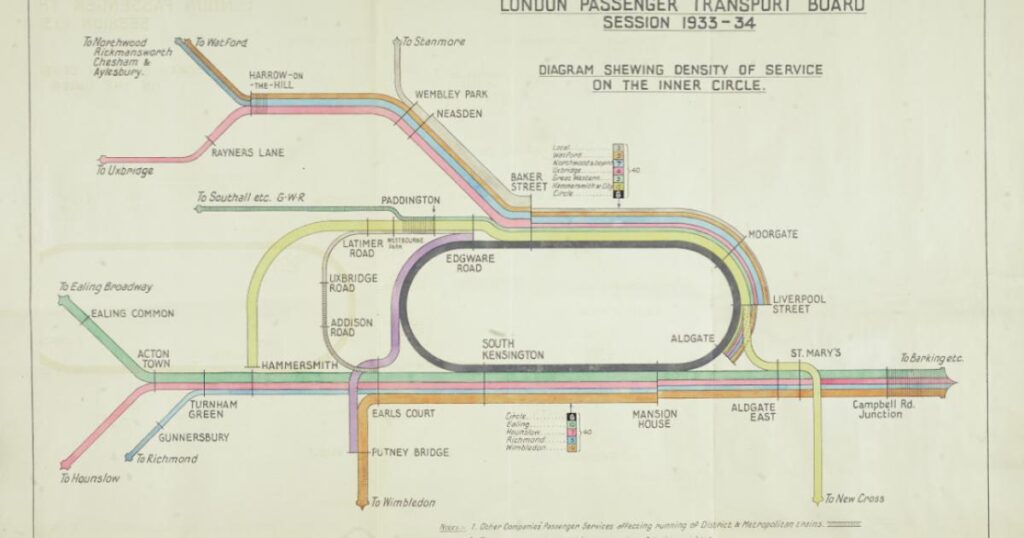Connecting to the Metropolitan Railway at Paddington, work on the Hammersmith & City Railway began in 1861.
The first section of the route, which initially started in Hammersmith and terminated in the City, opened in 1864.
The line was largely built on a viaduct across open fields in west London, with services also using the “cut and cover” tunnels of the Metropolitan line.
The Hammersmith & City Railway was built to connect to the Metropolitan Railway (Image: TfL Corporate Archives) In 1867, the Metropolitan Railway took a major stake in the Hammersmith & City line, and its name would gradually fade from use, before reappearing almost 125 years later.

Within 20 years, services on the route ran even further into east London, ending at Whitechapel. At the start of the 20th Century, the line was electrified.
The railway was jointly owned by the Metropolitan and Great Western Railway until it was taken over by London Transport in 1933. Services were extended to Barking three years later.

Although it was always intended to have its own route, the Hammersmith & City line was marked with the magenta of the Metropolitan line until 1990.
Since then, it has been firmly identified as a separate line, shown in pink on the Tube map.

In 2003, the line was partly privatised in a public-private partnership managed by the Metronet consortium.
By 2007, Metronet had gone unto administration and TfL took over responsibility for its services.
The first walk-through air-conditioned trains were introduced on the line in 2012, with the entire fleet replaced by 2014.
Today, the route is 15.8 miles long and has 29 stations, all of which are shared by other Tube lines.
Make sure to check our website at the same time next week to find out about the history of the District line.




